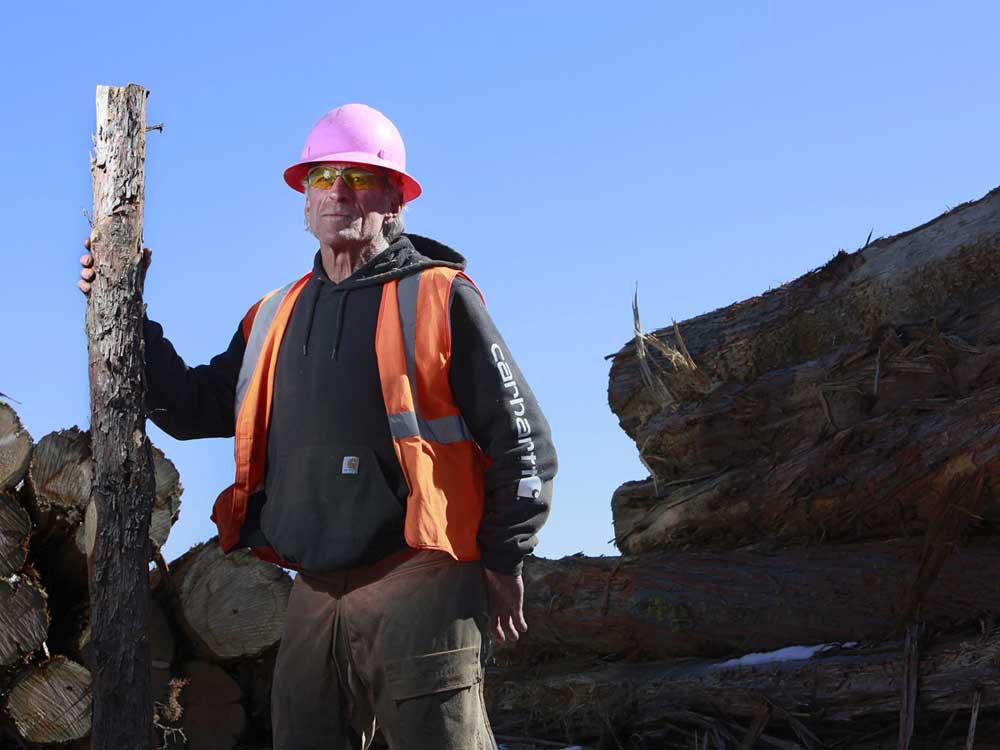Hines company finds market for juniper
Published 12:00 am Sunday, March 8, 2015

- Joe Kline / The BulletinGerard LaBrecque, owner of Joseph's Juniper, has found a market for milled juniper.
HINES —
On a12-acre parcel just west of Burns, Gerard LaBrecque mills wood from perhaps the least popular tree in Oregon.
Trending
“Everybody hated the junipers; everybody thought they were worthless,” LaBrecque said. “But one man’s trash is another man’s treasure.”
Joseph’s Juniper, the company LaBrecque founded in 2011, takes in Western juniper logs from across the region and mills them into fence posts, gate entryways and other products. LaBrecque markets his products in six states, and he said he was granted a 10-year stewardship contract for juniper logged near Steens Mountain.
“People are becoming aware that they can help the environment in some small way by purchasing juniper,” LaBrecque said.
Today, Western juniper dominates the landscape in Central and Eastern Oregon for as far as the eye can see, but that wasn’t always the case.
Tim Deboodt, an Oregon State University extension agent in Crook County, said that those regions have eight to 10 times more juniper now than they did in 1930.
“We’re just not keeping ahead of the juniper,” Deboodt said.
Trending
Cooler weather contributed to an uptick in populations even before 1930, but the introduction of livestock in the area, as well as active fire suppression, has dramatically tilted the environmental scales toward juniper over the past eighty years.
Deboodt said that livestock overgrazed grasses and other plants in the area when they were initially introduced, ensuring that juniper could spread largely unimpeded. And increased wildfire suppression mitigated another factor that kept the trees in check.
“Today, we have so many juniper seeds that it’s overwhelming the system,” Deboodt said.
Juniper puts an added strain on the environment, due to its ability to suck up water that other plants and animals need to survive. Deboodt said juniper is one of the few trees that has needles that intercept the water before it hits the ground, giving it an advantage over other plants. The trees can consume nearly 35 gallons of water per day in some areas.
“There are so many statistics that show how much a juniper drinks,” LaBrecque said. “That slows down an argument. I think we should just say it drinks a lot of water.”
LaBrecque stepped into this landscape in 1993, buying land in Eastern Oregon following a 33-year stint as a commercial fisherman off the coast of Alaska. He said he intended to retire, but instead found a local artisan who sold heirloom furniture made from juniper, and eventually decided to build furniture himself.
Because of juniper’s spread across Eastern Oregon, several state and federal agencies, including the Bureau of Land Management and the U.S. Forest Service, have combined to reduce juniper on public lands.
“Presently, agencies treat an average of 50,000 acres of juniper each year by mowing, under-thinning and prescribed burning dense and overcrowded stands,” reads a public interagency memo from 2014.
Still, removing the juniper is often easier said than done.
Deboodt said that while prescribed fires might work on younger junipers, as well as trees that have already been cut down, it is very difficult to burn mature juniper groves without doing significant damage.
“Once the tree gains dominance in a region, it becomes very hard to burn,” Deboodt said. “And if it does, often it turns into a crown fire, and nobody wants that.”
Because of this difficulty, LaBrecque’s first job at the mill was to “salvage” 200 acres of juniper. That is, to remove and reprocess the wood after the trees had been cut down.
Over the last four years, he has expanded his territory to take in junipers from Crook, Lake, Klamath and Grant counties, in addition to his stewardship near Steens Mountain.
“This company is as regional as one can be working within the juniper industry,” LaBrecque said.
The tree itself is famously difficult to work with. LaBrecque referred to it as “cantankerous,” citing its small size, tendency to grow in terrain that is difficult to log and the hard, knotted nature of the wood itself as impediments.
“When you cut into it, cedar is like butter,” LaBrecque said. “Juniper is like rock.”
Despite the challenges, the industry is growing, as consumers become more aware of the benefits to buying juniper wood. LaBrecque said that he expects to ship 40 semitrucks of juniper wood of various shapes and sizes this year, up from around 25 semi loads last year.
Meanwhile, Sustainable Northwest Wood, a Portland-based lumberyard that focuses on regional, sustainable products, is one of LaBrecque’s primary clients. Director of Operations Tamra Rooney said that about a third of the company’s total sales in 2014 were for Oregon juniper.
“We’re really looking to develop as many juniper products as we can,” Rooney said.
Rooney said that consumers were drawn to its durability. It takes longer to rot than many other types of wood. Additionally, milled juniper has fewer harmful chemicals than other finished wood. Rooney said that Sustainable Northwest Wood had seen the market for juniper double each year since the company began offering it about three years ago.
“Once people see it and understand some of its shortcomings, I think they realize what a good product it can be,” Rooney said.
—Reporter: 541-617-7818, shamway@bendbulletin.com








